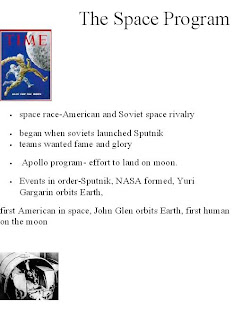Wednesday, October 29, 2008
As you probably know, Earths atmosphere acts as as a blanket of gases that surrounds it. The atmosphere makes Earth very different from the moon or a planet that has no atmosphere such as Mars. If you have ever gazed up at the moon, one of the first things that you probably noticed was the massive craters covering it's surface. These craters mostly came to be because the moon has no atmosphere. When meteoroids move towards Earth, the atmosphere will usually cause it to burn up or explode. This way, It is less likely to cause major damage on Earths surface. Planets that do not have atmospheres cannot stop such damage from occurring. Another reason that Earth is not covered in craters is the factor of weather which is made possible by the atmosphere. When Lance Armstrong first set foot on the moon, he left a footprint there. Because the Moon has no atmosphere and therefore no weather, that footprint will remain on it's surface for a long time. In the rare occasion that a large crater is left on Earth, the weather will wash away. The atmosphere also provides us with oxygen which animals need to live so life as we know it on a planet with no atmosphere is simply not possible.
Monday, October 27, 2008
Wednesday, October 8, 2008
Tuesday, October 7, 2008
Space Exploration Summaries
The Science of Rockets:
Recent versions of the Atlas rockets contain three stages-The Atlas(uses solid and liquid fuel engines to launch the payload into space),the centaur(maneuvers ship into propor orbit)and the payload which is the satellite or spacecraft carried by the rocket.
The Space Program:
NASA was created in 1958, it's mission being human space flight, so it embarked on project Mercury to see if humans could survive in space and when that was a success, they started project Gemini where two astronauts manned a spacecraft in space. In 1970, NASA launched Apollo 13,which was a complete disaster.Since then, we have sent several un-manned spacecrafts to the moon and Jupiter.
Exploring Space Today:
ISS has a plan for a small robot to float side by astronauts in space that will monitor temperature, pressure, air quality and make sure that there are no problems in the environment.It also will have a video phone so astronauts can communicate with each other.
Using Space Science on Earth:
NASA says that less than 1% of the U.S. budget is spent on the space program and for every dollar invested, the economy receives $7 in job creation, economic growth and taxes.
Recent versions of the Atlas rockets contain three stages-The Atlas(uses solid and liquid fuel engines to launch the payload into space),the centaur(maneuvers ship into propor orbit)and the payload which is the satellite or spacecraft carried by the rocket.
The Space Program:
NASA was created in 1958, it's mission being human space flight, so it embarked on project Mercury to see if humans could survive in space and when that was a success, they started project Gemini where two astronauts manned a spacecraft in space. In 1970, NASA launched Apollo 13,which was a complete disaster.Since then, we have sent several un-manned spacecrafts to the moon and Jupiter.
Exploring Space Today:
ISS has a plan for a small robot to float side by astronauts in space that will monitor temperature, pressure, air quality and make sure that there are no problems in the environment.It also will have a video phone so astronauts can communicate with each other.
Using Space Science on Earth:
NASA says that less than 1% of the U.S. budget is spent on the space program and for every dollar invested, the economy receives $7 in job creation, economic growth and taxes.
Subscribe to:
Comments (Atom)
